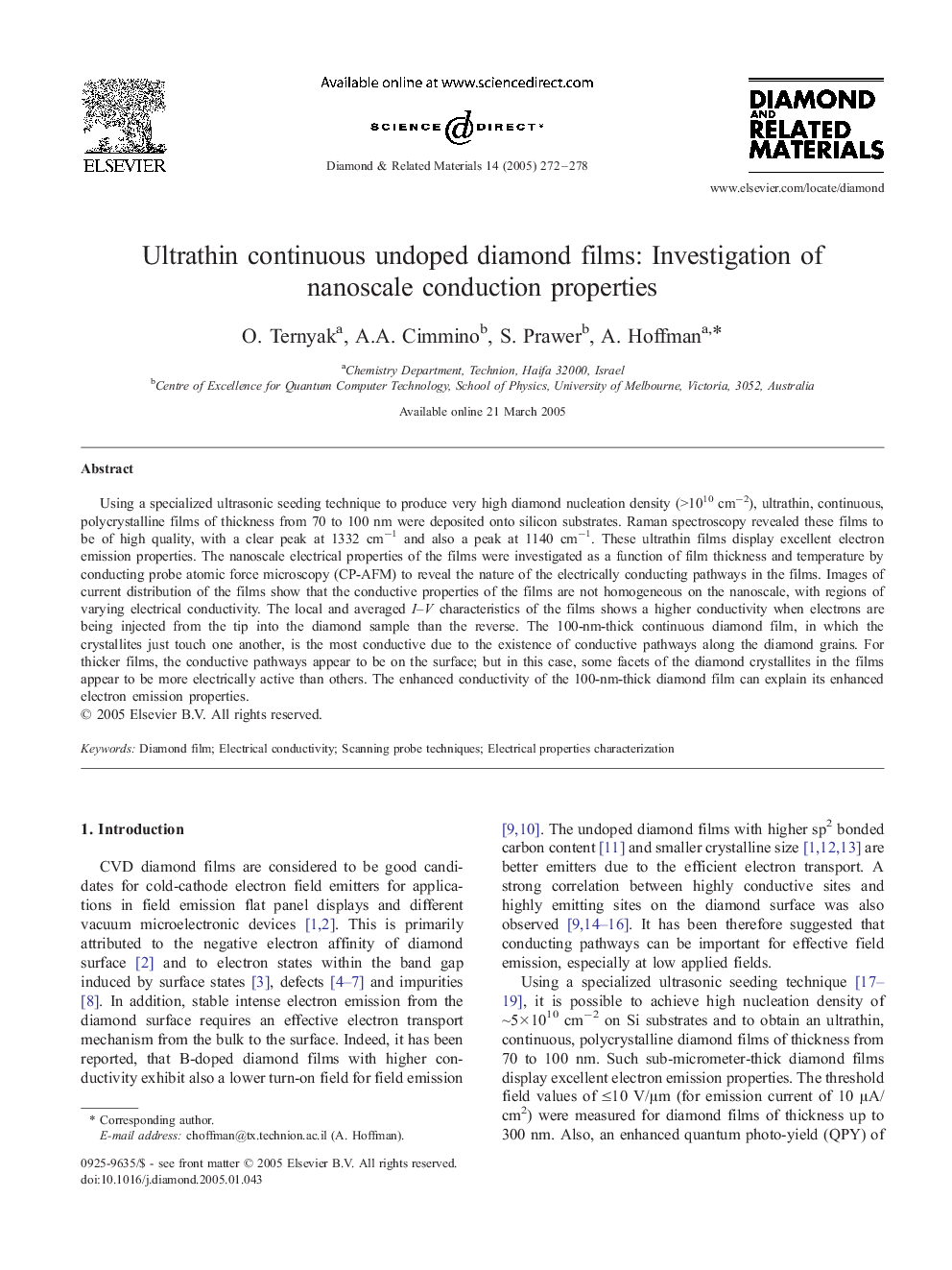| Article ID | Journal | Published Year | Pages | File Type |
|---|---|---|---|---|
| 9697383 | Diamond and Related Materials | 2005 | 7 Pages |
Abstract
Using a specialized ultrasonic seeding technique to produce very high diamond nucleation density (>1010 cmâ2), ultrathin, continuous, polycrystalline films of thickness from 70 to 100 nm were deposited onto silicon substrates. Raman spectroscopy revealed these films to be of high quality, with a clear peak at 1332 cmâ1 and also a peak at 1140 cmâ1. These ultrathin films display excellent electron emission properties. The nanoscale electrical properties of the films were investigated as a function of film thickness and temperature by conducting probe atomic force microscopy (CP-AFM) to reveal the nature of the electrically conducting pathways in the films. Images of current distribution of the films show that the conductive properties of the films are not homogeneous on the nanoscale, with regions of varying electrical conductivity. The local and averaged I-V characteristics of the films shows a higher conductivity when electrons are being injected from the tip into the diamond sample than the reverse. The 100-nm-thick continuous diamond film, in which the crystallites just touch one another, is the most conductive due to the existence of conductive pathways along the diamond grains. For thicker films, the conductive pathways appear to be on the surface; but in this case, some facets of the diamond crystallites in the films appear to be more electrically active than others. The enhanced conductivity of the 100-nm-thick diamond film can explain its enhanced electron emission properties.
Keywords
Related Topics
Physical Sciences and Engineering
Engineering
Electrical and Electronic Engineering
Authors
O. Ternyak, A.A. Cimmino, S. Prawer, A. Hoffman,
